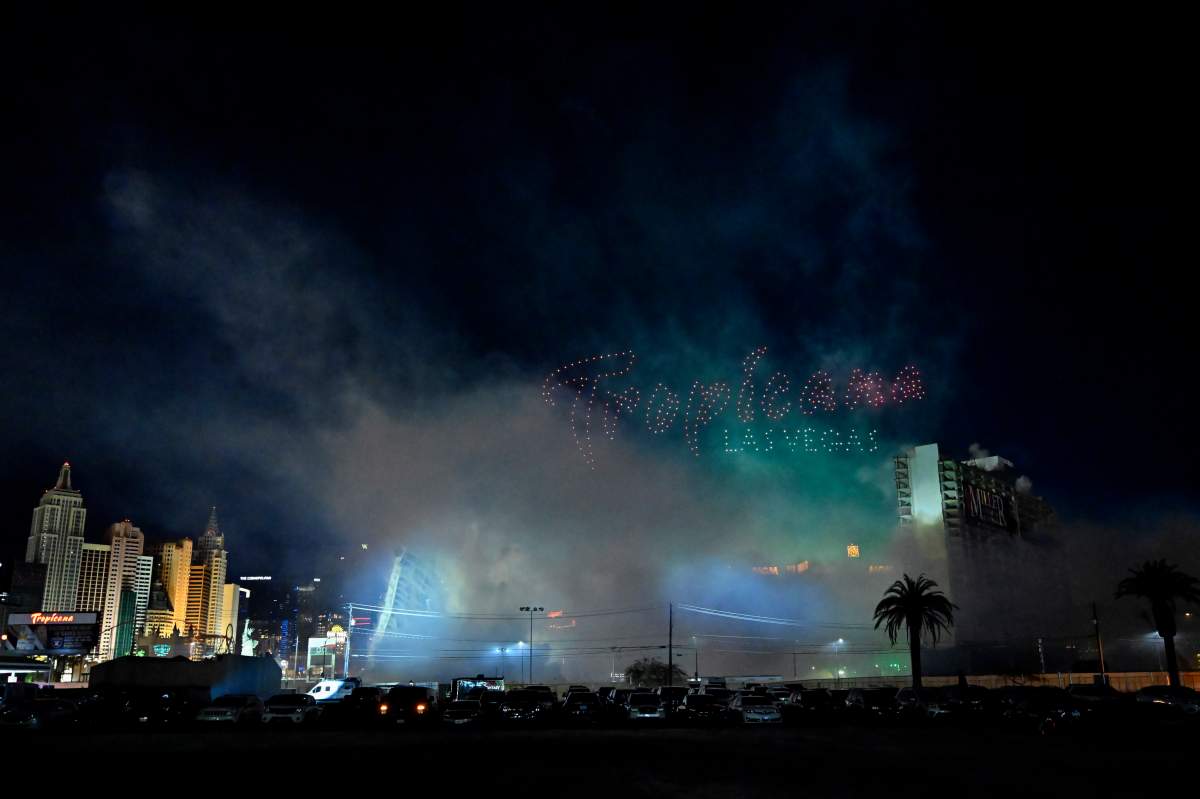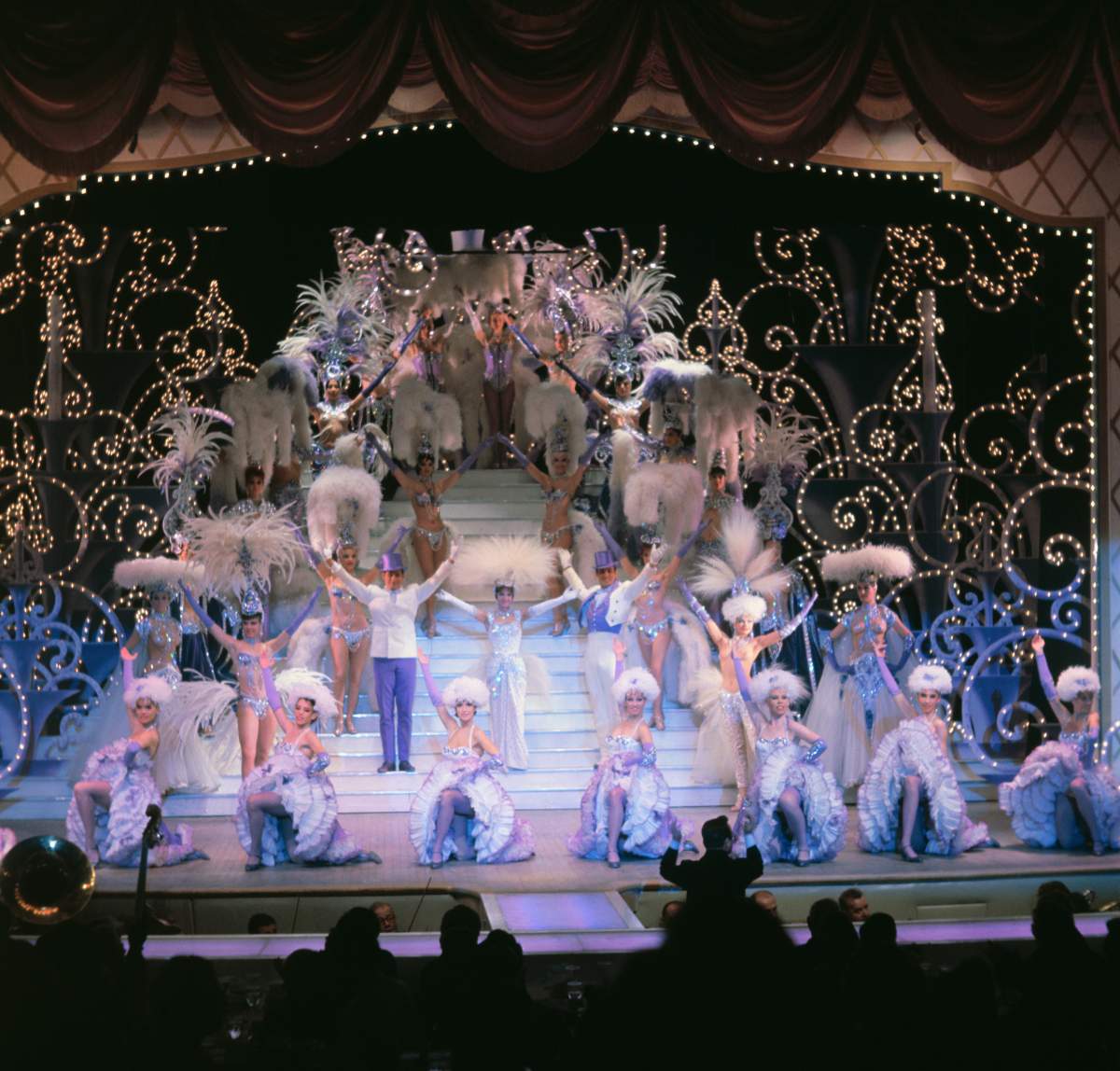After 67 years of welcoming guests on the Las Vegas Strip, the historic Tropicana hotel is no more.

The hotel and casino tumbled to the ground in a planned implosion that featured a fireworks and drone show in the early hours of Wednesday morning, reducing to rubble the last true mob building on the Strip.
There were no public viewing areas for the implosion due to the safety risks — the streets around the hotel were closed by Las Vegas police — though people in the neighbouring highrise resorts had a great view of the action.
At around 2:30 a.m., the fireworks show began, local outlet KTNV reports, accompanied by 555 drones that buzzed around in tandem, spelling out ‘Tropicana’ and ‘Thank You.’
Minutes later, the implosion was triggered and the towers of the Tropicana came down in just a matter of seconds, sending up huge clouds. When the dust settled, the building was gone, brought down by nearly 2,200 pounds of explosives.
In its place will be a US$1.5-billion baseball stadium for the Oakland Athletics. The ballpark and on-site resort will take up about nine acres, planned by Bally’s and Gaming and Leisure Properties, according to KTNV.

Get breaking National news
The Tropicana’s demolition is the first implosion in nearly a decade for a city that loves fresh starts and that has made casino implosions as much a part of its identity as gambling itself.
“What Las Vegas has done, in classic Las Vegas style, they’ve turned many of these implosions into spectacles,” said Geoff Schumacher, historian and vice-president of exhibits and programs at the Mob Museum.
Former casino mogul Steve Wynn changed the way Las Vegas blows up casinos in 1993 with the implosion of the Dunes to make room for the Bellagio. Wynn not only thought to televise the event but also created a fantastical story for the implosion that made it look like pirate ships at his other casino across the street were firing at the Dunes. From then on, Schumacher said, there was a sense in Las Vegas that destruction of that magnitude was worth witnessing.
The city hasn’t blown up a Strip casino since 2016, when the final tower of the Riviera was levelled for a convention centre expansion.
The Tropicana was the third-oldest casino on the Strip when it closed in April. It was once known as the “Tiffany of the Strip” for its opulence. It was a frequent haunt of the legendary Rat Pack and was renowned for its Folies Bergere showgirls.
It opened in 1957 with three storeys and 300 hotel rooms split into two wings. Over the years, it underwent major renovations, adding two hotel towers and a US$1-million green-and-amber stained glass ceiling above the casino floor.
The Tropicana’s original low-rise hotel wings survived the many renovations, however, making it the last true mob structure on the Strip. Behind the scenes of the casino’s grand opening, the Tropicana had ties to organized crime, largely through reputed mobster Frank Costello.
Costello was shot in the head in New York weeks after the Tropicana’s debut. He survived, but the investigation led police to a piece of paper in his coat pocket with the Tropicana’s exact earnings figure, revealing the mob’s stake in the casino.
By the 1970s, federal authorities investigating mobsters in Kansas City charged more than a dozen operatives with conspiring to skim $2 million in gambling revenue from Las Vegas casinos, including the Tropicana. Charges connected to the Tropicana alone resulted in five convictions.
With the Tropicana gone, that leaves the Flamingo as the Strip’s sole remaining casino from the mob era. But, Schumacher said, the Flamingo’s original structures are long gone. The casino was completely rebuilt in the 1990s.
— with files from The Associated Press












Comments